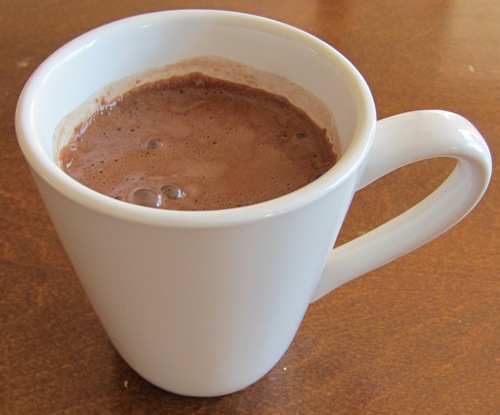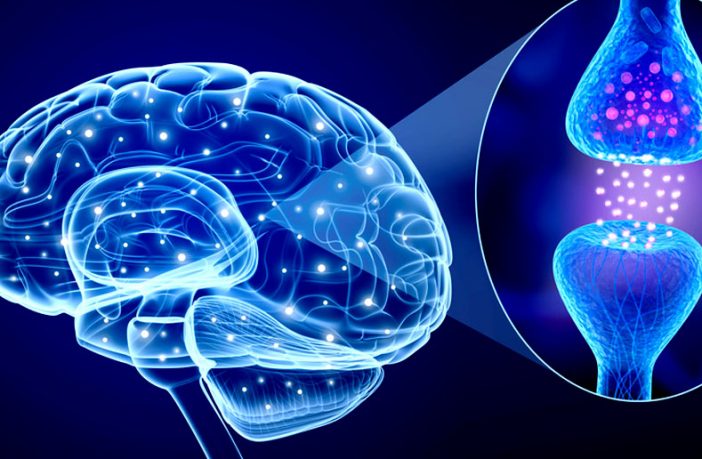
Phone/ Text : 508-717-4110
Email: neldc.org@gmail.com
|
ADHD Working memory is a key element of executive functioning and poor excutive functions is seen not only in children presenting with ADHD but also children who have been diagnosed with Attention Deficit Disorder. One boy who I worked with at a residential treatment facility in Canton, MA, was taking 12 different psychotropic medications. He was taken off all of his meds and given behavioral therapy, as what was the protocol at the center. He was enrolled in the school program. As his math problem solving skills improved so the his presenting ADHD. Both math calculation and math problem solving skills are executive functioning tasks. In addition areobic movement stimulates the brain into producing new brain cells which create neural pathways. So it would be logical that Math combined with active sports activities would not only improve acheivement in math, but also have the potential to make permanent changes in the brain and present as not only a treatment of ADHD but also have the potential for a real cure. Elite Private Schools where children end up going to the best Universities have been combining sports and areobic activities for a very long time. It is also known that as brain growth in a young child slows down as the child becomes older, so does Hyperactive behaviors Providing Areobic Exercise before and after math activities should stimilate the brain into forming new neural pathways from the regeneraton of neurons. Nutrition also plays a vital role as protien and essential nutrients have been long proven as needed for good brain development. Yet some American Public Schools will still deny a child a lunch if the are unable to pay for it. Both public and charter schools will often skip on recesss in order to cram in more time for academics and even straddeling kids with homework well into the after school hours and evenings, leaving little time for exercise. Math is a Neuroplastic Activity that improves Executive Functioning
And so Does Areobic Exercise
Treatment of ADHD without Meds Is it Really Possible?
Consider how many people start their day off with a cup of coffee to help them focus. Do so many people really have ADHD? As a parent, I found chocolate, in which the main ingredient is Cocoa very effective in treating ADHD. I found semisweet chocolate bits even more effective. I knew that Cocoa contains natural stimulates and I wanted a safe and effective way to treat ADHD. Italian researchers tested the effects of cocoa flavanols. The study showed people who consumed medium and high amounts of cocoa flavanols every day made significant improvements on tests that measured attention, executive function, and memory. The findings were published online in the American Journal of Clinical Nutrition. Other Health benefits of cocoa include relief from high blood pressure, cholesterol, obesity, constipation, diabetes, bronchial asthma, cancer, chronic fatigue syndrome and various neurodegenerative diseases. It is beneficial for quick wound healing, skin care, and it helps to improve cardiovascular health and brain health. It also helps in treating copper deficiency. It possesses mood-enhancing properties and exerts protective effects against neurotoxicity. Benefits of Caffeine Caffeine has a positive effect on symptoms of attention deficit disorder, or ADD/ADHD. Like prescription medications typically prescribed for children with ADD/ADHD, caffeine is a stimulant. However, instead of becoming stimulated and hyperactive from caffeine, many children with ADHD who are treated with caffeine may actually experience a reduction in their symptoms, according to a review by Marjorie Roth Leon in the "Journal of Attention Disorders." |
Neuroplasticity
As a parent, I noticed how my two oldest son’s as preschoolers, were both extremely active, especially as they made cognitive gains. I pondered whether movement and brain growth had anything to do with each other. I had noticed that whenever there was a cognitive developmental leap, preceding it was that my two boys would become more physically active. Could movement be stimulating their brain growth causing a leap in ability and learning? This led me to the next question to ponder. That is: Could it be that by giving stimulant medication, to children short-circuiting the brain into not producing the vital neurons for learning? In addition, stimulant medications whose chief ingredient is Amphetamines magically were simply not addictive to ADHD children anymore but continued to be addictive for normal children. Therefore it remained a controlled substance and yes even though these drugs were found to be neurotoxic in laboratory rats, they were found to be not neurotoxic in the brains of young children in the minds of the pharmaceutical industry and the FDA. But to the Food and Drug Administration, it was a matter of who you talked to. And yes, the child would remain moderately well behaved on his ADHD drugs for a discrete period of time, before the medication was upped to a higher amount to keep the same result. Eventually, the medications stopped working. As a school psychologist, I had an eight-year-old student who was in the third grade and who was extremely disruptive, yet on the highest dose possible for ADHD medication. He was titrated off the ADHD medication after I argued that the meds were not doing anything to his mother and health care provider. Instead, he was moved to another class and put on a behavior plan. The results were remarkable. At the same time, I had noticed that students on ADHD meds consistently graduated to higher and higher doses of the meds as they became more and more disruptive, even though they were still taking ADHD meds. MRI studies of the brains of children and Adults diagnosed with ADHD have found that their brains are actually smaller and less developed. Stimulant medications were quickly scrubbed out as a causative factor, even though it was well known that the same result was occurring in the laboratory rats who had been fed ADHD meds, as neurotoxic means that brain cells are dying and therefore the brain is smaller. The only difference was that researchers had the opportunity to dissect the brains of the rats and make the discovery that Amphetamines are neurotoxic in the laboratory at the same titrated dosage given to children. Today’s schools have often cut out Physical Education especially in the poorly funded schools, as part of the draconian educational system based on arbitrary benchmarks on a single corporate created high stakes test. Even though much more money is spent on Education, in the USA, the results have continued to be abysmal. Much of this money now goes into the coffers of corporate America who produces the product of Education. Teachers follow scripted prewritten lesson plans with little opportunity for any discrete changes. The kids are often fed on low-quality junk food that only meets the minimal standard of nutrition. It is now known that high carbohydrate junk food causes dementia and diabetics in adults, however, the political powers that be in place, feel that it is perfectly fine to feed kids a high carb diet and then prevent them from moving for eight hours a day. “Three underperforming charter schools in New Orleans are one step from closing next spring after a Board of Elementary and Secondary Education committee voted unanimously Monday against renewing their charters.” How is this possible, when these students are spending more time in class than ever before? https://thelensnola.org/2017/12/11/state-recommends-closure-of-three-charter-schools-in-new-orleans Just look at these flashy Charter School names! Would you not want your child to go there after hearing these names? “Benjamin Franklin Elementary Mathematics and Science School and Mary McLeod Bethune Elementary School of Literature and Technology.” These school’s both received the F letter grade which is hard evidence that keeping kids in school longer and doing pure academics is not effective. In Russia, children go to school for a shorter period of time and yet have much higher test scores in math, science, and literacy than American Children. When I was teaching at the Saudi Arabian International Schools in Jeddah, our test scores were off the charts, being in the 99th percentile for on the Standard Achievement Tests. Our K-9 students were admitted to Andover Academy and Choate on their way to the Ivy League Schools. Yet we always had recess and physical education every day. Our school year was 175 days and school got out around 2:00 PM. When I was in China, physical education was an integral part of the school program along with rest periods. In college, as a biology major before studying psychology, I had learned that brain cells do not regenerate. It took a very long time to persuade psychologists and psychiatrists to give up their long-held belief that new neurons could not be formed in the brains of adults, but there is no longer any doubt about it. It is now well-established that strenuous physical exercise stimulates the birth of new neurons in part of the brain that is critical for memory, the hippocampus. It is now known that the molecular and cellular details explaining how exercise stimulates the birth of new brain cells have been worked out now in great detail. Immature non-neuronal cells in both the child and adult brain (glia) respond to protein growth factors that are generated in the body during robust physical activity. These growth factors stimulate the mother cells to spawn new neurons in the hippocampus. Amazingly, these nubile neurons then migrate through brain tissue to find their proper place in the neural circuitry. Even more remarkable, new research proves that the new neurons are then able to wire themselves into the existing network of connections to boost performance in memory, just like adding RAM chips does for a laptop. It is now known that animals forced to exercise also have a much slower cognitive decline in aging compared to sedentary cage-mates. Interestingly, the same drugs used to treat chronic depression have been found to stimulate the birth of new neurons in the hippocampus. https://www.huffingtonpost.com/dr- Neuroplasticity-based treatments have been proven to help adult stroke victims and people with schizophrenia,” according to Dr. Wexler “Since the plasticity of a child’s brain is much greater than an adult’s, the potential for cognitive improvement is therefore also much greater.” Dr. Wexler worked in collaboration with Professor Jinxia Dong, a former Chinese national gymnast, and director of the Research Center for Sports Studies and Society at Peking University in China, to develop the physical exercise component. This has led to the first cognitive development program with the integration of physical and computer exercises to improve a child’s ability to think, focus, learn, and socially interact. The program developed by Dr. Wexler is for children ages 5-9. “A prototype evaluated in Beijing during the summer of 2010 produced cognitive gains similar in magnitude to a 10-point increase in cognition. An improved version of the program showed similarly promising results this past summer with children from New Haven Reads.” https://www.c8sciences.com/c8-sciences-founder-bruce-wexler-awarded-4-million-nih-grant-for-adhd-research As a parent and as a school psychologist I testified before the FDA in March 2006. One of my sons had become a victim of being forcibly medicated with Adderall. His cousin, who had been placed on the same stimulant medication, had to undergo open heart surgery as a direct result of taking the medication Adderall XR.
My son had a very rapid heartbeat, so I took him to another doctor for a second opinion. I was divorced and my ex-wife had been duped by the doctor that he has ADHD and without being medicated he could not function in school and the outcome would be very bad. The doctor diagnosed tachycardia, which is a serious heart condition as a result of this “medication”. He was a little bit more fortunate because he started to complain about chest pains and when I first told the doctor about the chest pains what ended up happening was the doctor ignored me. I took my son to another doctor and sure enough, he had tachycardia. I sent the letter to the doctor and the doctor still kind of ignored it, so then I sent a letter to the Medical Board, then the doctor took my son off the medication. My son was diagnosed by a neuropsychologist and two psychiatrists because of disagreement between my ex-wife and Now in the year 2018, the Centers for Disease Control and Prevention (CDC) are urging medical providers to refer parents of preschoolers who exhibit symptoms of ADHD to therapy sessions, rather than turning first to medication. If we take a closer look at the CDC’s viewpoint like Dr. Wexler did, and discuss the benefits of a full cognitive and exercise program, this will help shed light on why decisions regarding treatment are not easy ones for parents to make. Vital Signs revealed that 75-percent of kids aged two to five with Attention Deficit Hyperactivity Disorder are already on some kind of medication. The big concerns about this approach come from the possibility of causing side effects like difficulty sleeping, irritability, curbing hunger and stunting growth in addition to stimulant medication found to be toxic in laboratory rats. (Shire Corporation to James Paicopolos January 22, 2014). According to Dr. Schuchat of the CDC, “Behavior Therapy has been shown to be as effective as medication but leaves out the risks of side effects. Exercise as ADHD Treatment? According to Dr. Wexler, New research has revealed just how critical physical movement is to academic performance, what with its ability to improve mental focus, memory, and cognitive flexibility. In fact, mental exercises to build – or rebuild – attention span have revealed promise as adjuncts or alternatives to classic amphetamines when addressing ADHD symptoms. The medical journal Pediatrics recently conducted research which found that kids who took part in a regular physical activity program showed significant enhancement of cognitive performance and brain function. The findings, according to University of Illinois professor Charles Hillman and colleagues, “demonstrate a causal effect of a physical program on executive control and support for physical activity for improving childhood cognition and brain health.” The CDC unfortunately, “stopped short” of saying that young children shouldn’t be medicated for ADHD, adding its opinion that such a decision was for parents and doctors to make and that medication may sometimes be inappropriate. Georgina Peacock believes that with behavioral therapy, it is possible that some children may never need medication to address ADHD. Letter from Shire Pharmaceuticals to James Paicopolos: 725 Chesterbrook Blvd.
Neuro-toxic Effects of Adderall XR
Sincerely, New England Learning and Development Center | Boston, MA | Tel: 508-717-4110| Abu Dhabi, UAE Phone: 971 2 444 1100 | Tamil, Nadu, India Phone: 91 7708525049 |



